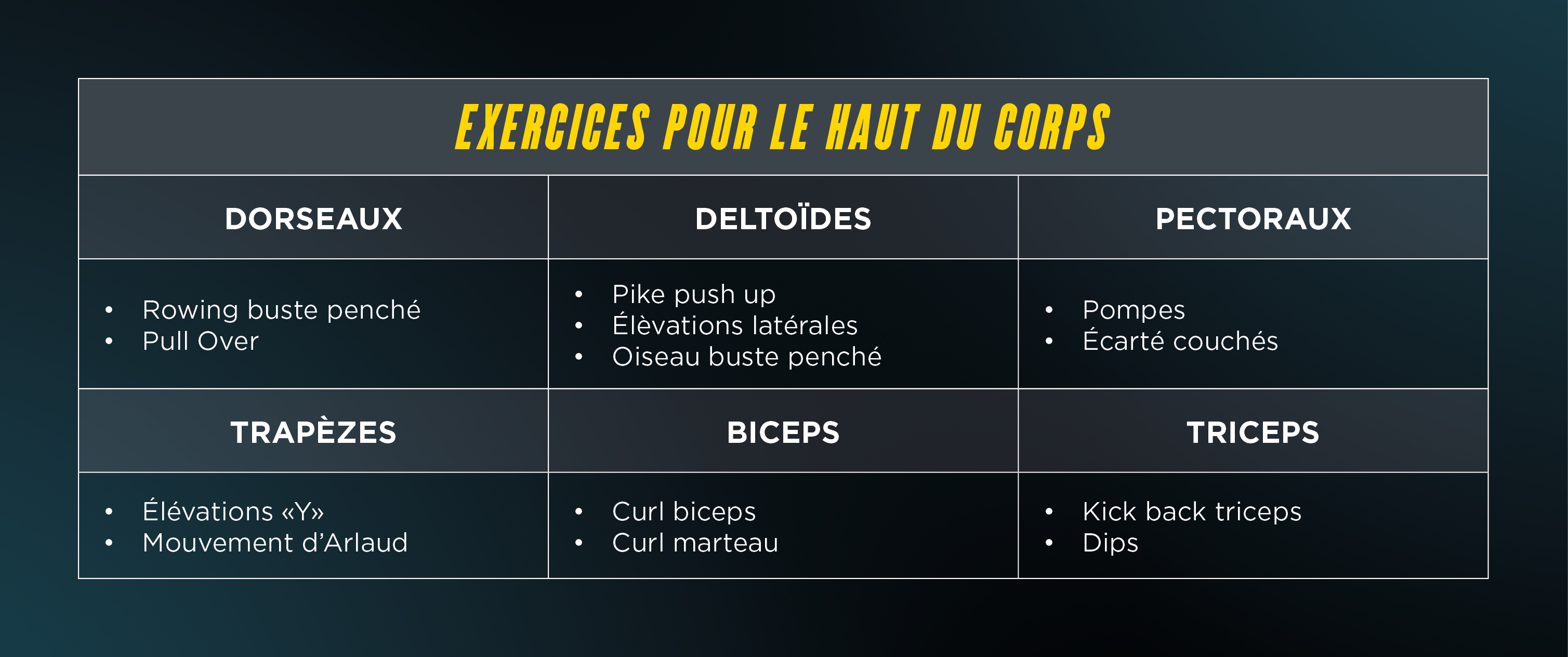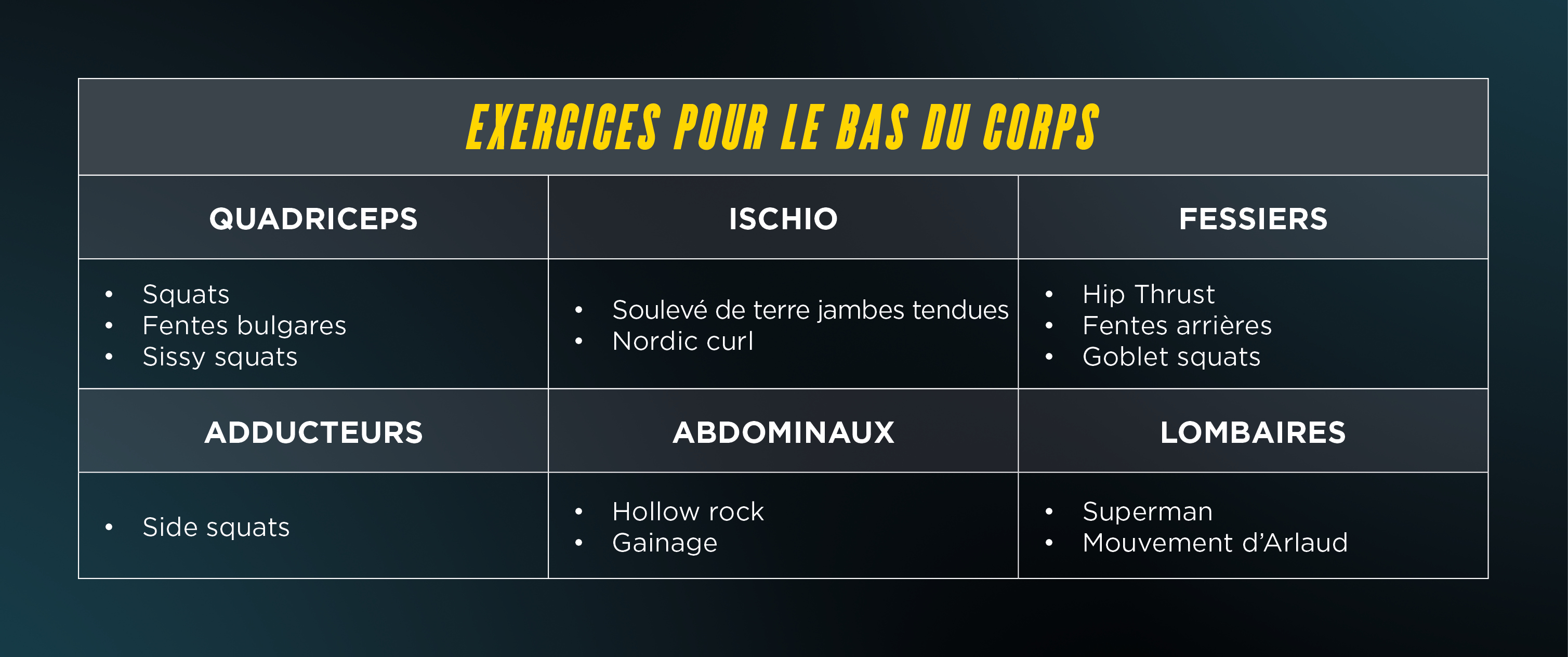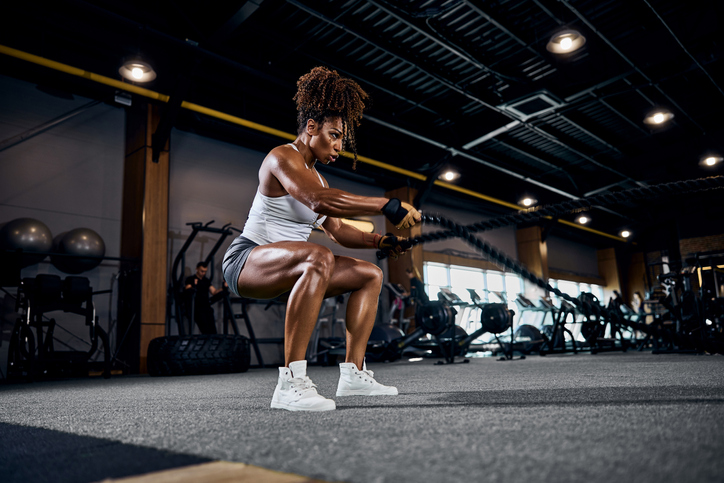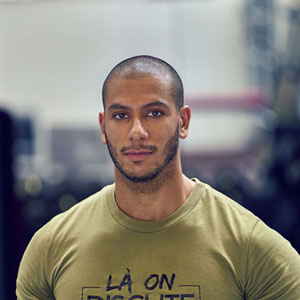Exercices de musculation pour les femmes
Il n’est pas rare pour certaines pratiquantes de penser qu’il est indispensable de faire des exercices de musculation totalement différents de ceux des hommes pour éviter de progresser de la même façon. C’est en général pour cette raison que les programmes destinés aux femmes utilisent un vocabulaire très particulier comme “affiner, raffermir, tonifier”. Mais en réalité, est-il vraiment nécessaire d’utiliser des exercices de musculation spécifiques pour les femmes ? C’est ce que je vais t’expliquer aujourd’hui. Sache également que chez Fitness Park, nous avons conçu des espaces 100% réservés aux femmes afin de t'entrainer dans les meilleures conditions. N'hésite pas à consulter nos clubs de sport pour femmes.
Les bienfaits de la musculation chez les femmes
Physiologiquement, les bienfaits de la musculation sont potentiellement les mêmes chez les hommes et les femmes. Le développement de la masse musculaire et la diminution de la masse grasse sont tout aussi bénéfiques dans les deux cas de figure. La prise de muscle et la perte de gras doivent donc être au centre de la pratique de la musculation. Pour cela, tu le sais déjà sûrement, il faut pouvoir suivre un programme de musculation cohérent et si besoin, effectuer des séances de cardio-training en complément.
Une différence de progression entre les hommes et les femmes
Ceci dit, il y a quand même quelques petites différences entre les hommes et les femmes, surtout au niveau de la progression dans ce sport. Étant donné que la prise de muscle et la perte de gras sont en partie optimisées par certaines sécrétions hormonales, les hommes ont un léger avantage de ce point de vue-là. Il est évident qu’un homme met moins longtemps à prendre cinq kilos de muscles et à perdre cinq kilos de gras qu’une femme.
Des objectifs d'entraînements similaires
Mais mis à part cette petite distinction physiologique, les objectifs d'entraînement des hommes et des femmes peuvent tout à fait rester les mêmes. Il est possible pour une femme d’organiser ses séances de musculation autour d’un objectif de prise de muscle, puis de perte de gras.
Ce qu’il faut bien réaliser, c’est que nos muscles sont constitués de la même façon et répondent aux mêmes types de stimulations. Que tu sois un homme ou une femme, tes fibres musculaires doivent être soumises à une tension mécanique assez importante pour se développer. La seule différence importante est tout simplement que les hommes et les femmes ne cherchent pas à développer les mêmes groupes musculaires. Un homme va probablement vouloir développer ses pectoraux et ses bras (en plus du reste bien évidemment) alors qu’une femme cherchera sûrement à mettre un peu l’accent sur les bas du corps en travaillant les fessiers ou les cuisses un peu plus souvent. Mais une chose est certaine, si un homme et une femme ont exactement le même objectif et cherchent à développer de la même façon tous les groupes musculaires, alors ils n’ont aucune raison d’utiliser des exercices différents. C’est donc bien l’objectif et non le sexe qui va guider ton choix d’exercices.
La musculation s’adapte aussi bien aux femmes qu’aux hommes
Les idées reçues comme quoi les femmes devraient plutôt suivre des cours de renforcement d’abdos fessiers ou des cours rythmiques comme de la Zumba ou encore des techniques plus “douces” comme le Pilates ne fait que compromettre leurs capacités à atteindre un haut niveau rapidement. Alors attention, si la Zumba ou le Pilates sont des activités que tu affectionnes, alors il n’y a aucune raison d’arrêter. Mais il ne faut pas imaginer que ce sont les seules façons de faire du sport lorsqu’on est une femme.
En tant que femme, tu es donc la seule à décider quels groupes musculaires tu as envie de développer. Ton rêve est d’avoir des épaules et un dos hyper massif ? Alors, utilise les meilleurs exercices pour ces zones du corps. Du développé militaire et du rowing buste penché t’aideront à bien les travailler. Et si au contraire tu préfères développer les ischios et les fessiers, alors oriente-toi plutôt vers du squat et du soulevé de terre jambes tendues.
Bien sûr, il est tout à fait possible d’arriver à tes fins grâce à un entraînement fait à la maison avec un matériel limité ! Le tout est d’avoir un tout petit peu d’imagination et de savoir comment effectuer les bons exercices au bon moment. Voici une petite liste des mouvements à effectuer au poids du corps ou avec une paire d’haltères.
Les meilleurs exercices de fitness à faire


Avec cette petite sélection de mouvements, tu devrais pouvoir te construire un programme adapté à ton propre objectif, que tu aies envie de développer les bras ou les fesses ! Bon courage ;)
PARTAGER L'ARTICLE
 Offre spéciale : Les 4 premières semaines à 19€
Offre spéciale : Les 4 premières semaines à 19€




